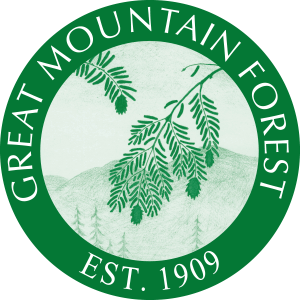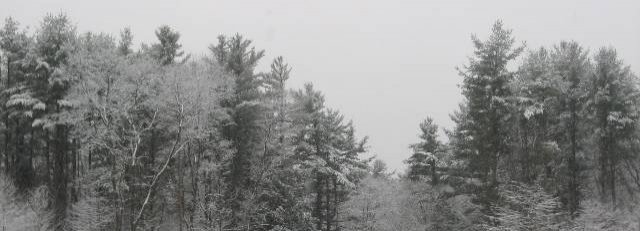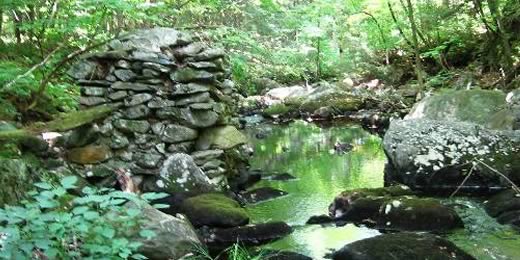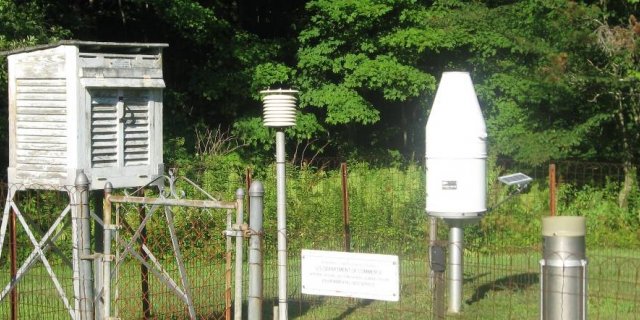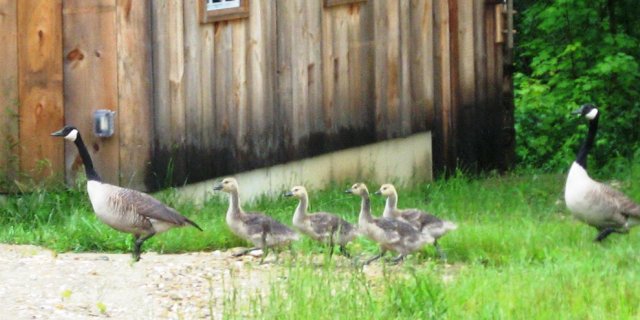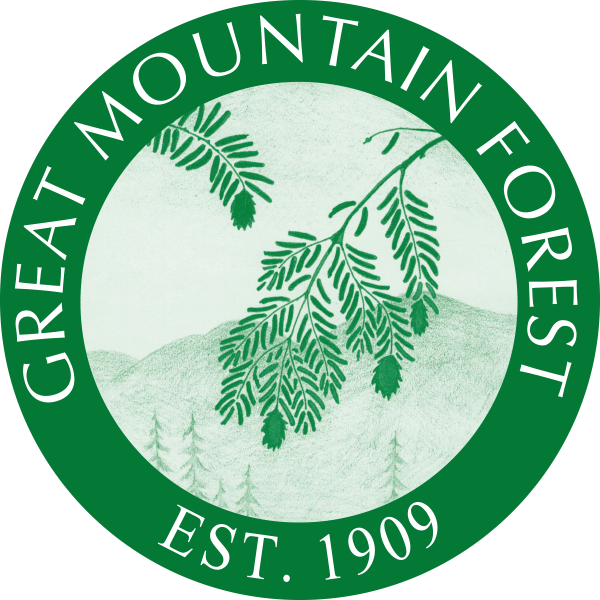
PREVIOUS WEATHER REPORTS
February 2013
Winter is Back
By Russell Russ
Old Man Winter has not forgotten Norfolk after all. February turned out to be a more normal winter month than what we have seen lately. It was just a little warmer than normal, but snowfall was nearly six inches above normal.
There were a good number of days with a little snow, but the clincher was the blizzard that hit on February 8 and 9. While it was a bigger snow producer just to our east and south, it still left Norfolk with a 17 to 24 inch blanket of snow. It turned out to be a very interesting event in that the snow totals varied greatly over relatively short distances due to the heavy bands of snow that quickly dumped snow in one location while just a few miles away there was considerably less.
Hard to believe there could be a 10 inch snowfall difference in such short distances, but that is exactly what happened. Snowfall totals from some areas in southern Connecticut topped 3 feet. We better hold off on giving winter its last rites, it appears to not want to let go that easily.
February’s high temperature of 46 degrees was observed on February 15 and the low of 5 degrees was observed on both February 10 and 18. No daily or monthly records were broken this month. With an average temperature of 23.8 degrees it was 1.9 degrees warmer than normal. The month of February is typically when we get most of our lowest temperature readings. We did not slip below zero this month, but we did manage to get to 10 degrees or colder eight times. Last year, February 2012, was the second warmest February in our 81 year history.
The total precipitation recorded for the month was 3.69 inches, 0.05 inch above normal. The monthly snowfall total was 26.2 inches, 5.8 inches above normal. A good portion of the monthly snowfall came from the blizzard on February 8 and 9, and most of that came during the early morning hours of February 9. Last year, February 2012, was our second driest February on record and was also tied with 1941 as our third least snowy February on record.
The 2013 calendar year (January and February) snowfall total of 33.8 inches is 7.9 inches below normal. The snowfall total for this winter season, October through February, is 55.7 inches. This is 10.8 inches below normal for this time period, but it is 11.4 inches more than last year.
January 2013
The New Normal?
By Russell Russ
The first month of 2013 picked up right where 2012 left off. It was another warmer than average month. January on average is our coldest and snowiest month of the year. Our winter did finally seem to begin with some colder temperatures this month, but the typical Norfolk snowfall continued to elude us.
Many adults remember the good old winter days when we got “tons” of snow and when it was “always” in the single digits or even colder. The teenagers of today have only heard about how warm it is and how little snow we have. The big snowstorm and really cold temperatures do still come, but they are few and far between these days. It seems like the new normal for Norfolk’s wintertime will be less snow and warmer temperatures.
With an average mean temperature of 24.0 degrees January was 3.3 degrees above normal. It was warm, but not even in the top ten for warmest. The warmest January continues to be January 2002 with an average mean temperature of 32.4. The month’s high temperature of 57 degrees was observed during the early morning hours of January 31. The low temperature of minus 5 degrees, our coldest temperature of the season so far, was observed on January 24. In adjacent towns and other parts of Norfolk there were reports of minus 10 to minus 12 degrees on that morning. At the weather station so far this winter we have dipped below zero on just one day.
Tobey Pond and Wangum Lake froze over for good on January 2. For Tobey it was one week earlier than last year and for Wangum two weeks earlier than last year. With colder temperatures and little snow the conditions were good for skating and ice fishing on most local ponds.
January’s total precipitation amount was 2.05 inches, 2.01 inches below normal. The monthly snowfall total of 7.6 inches was 13.7 inches below normal. The snowfall total for this winter season to date, October through January, is just 29.5 inches, 16.6 inches below normal.
On January 25 around noontime a beautiful halo appeared around the sun. This type of halo, called a 22 degree halo or a 22 degree circular halo is not all that uncommon. They are beautiful to see in person, but are very difficult to photograph. Sunlight hitting ice crystals in high, thin cirrus clouds produces the visual affect which often times, but not always, means a front is moving in that will soon bring precipitation. In this case we did pick up a half inch of snow later that evening.
December 2012
Norfolk’s December Weather and a Yearly Summary for 2012
By Russell Russ
December came in tied with the December of 1996 as Norfolk’s eighth warmest December in the last eighty-one years. No daily temperature records were set this month, but with an average mean temperature of 31.2 degrees it was 5.8 degrees warmer than normal. The month’s high temperature of 54 degrees was observed on December 4 and the low temperature of 15 degrees was observed on December 26.
December’s total precipitation amount was 6.08 inches, 1.56 inches above normal. The monthly snowfall total of 15.2 inches was 2.1 inches below normal. For those keeping track, Norfolk did have a white Christmas, unlike last year. The snowfall total for this winter season, October through December, was 21.9 inches, 2.9 inches below normal.
Many smaller ponds in the area iced over initially in November, but then went out again in early December. Most iced over for good around Christmas Eve. Tobey Pond and Wangum Lake were still mostly open through the end of the month. By early January they should both be iced over. Last year Tobey and Wangum iced over by around December 27.
In review of Norfolk’s weather for the 2012 calendar year it was yet another year for the record books. With an annual average mean temperature of 48.5 degrees it was 3.7 degrees above normal and was the warmest year on record since observations began at this station in 1932. Other than June which was exactly average and November which came in 1.7 degrees below normal, every other month was above normal for temperatures. Many locations throughout the Northeast also recorded their warmest year, and some of those records go back to the 1820’s. With a total precipitation amount of 45.98 inches it was 6.89 inches below normal. Dry as it was, it was not even in the top twenty percent for driest years. The yearly snowfall amount of 50.5 inches placed 2012 as our fifth least snowiest year. This was nearly 41 inches below our normal yearly snowfall amount.
November 2012
Driest November on Record
By Russell Russ
November was a record setting month. It was the driest November on record for us, which means the driest over the last eighty-one Novembers. It was also the seventh driest month of any month for this same time period. Not what we needed this year, but certainly one for the record books.
The month’s low temperature of 17 degrees was observed on November 6 and the high temperature of 62 degrees was observed on November 11. The average mean temperature was 35.4 degrees, 1.7 degrees below normal. There were no daily temperature records set this month, but it was the coldest November since 1997. Looking back at our records, this month was the twentieth coldest November on record. Not really that noteworthy until you notice that it was the coldest one in the last 15 years. Does this mean something? Good question.
The total precipitation for the month was a mere 0.84 inches, 3.85 inches below normal and the driest November on record. The next few driest Novembers were 1976 with 1.04 inches, 1946 with 1.52 inches, 2001 with 1.54 inches and 1933 with 1.98 inches. As for driest months of any month here is that list: Feb. 1987 with 0.60 inches, Oct. 1963 with 0.63 inches, Mar. 1981 with 0.64 inches, Aug. 1953 with 0.65 inches, Jan. 1970 and Jun. 1988 with 0.74 inches, and Dec. 1943 with 0.83 inches.
Through November this year, the total precipitation amount was 39.90 inches. For the first eleven months of the year we were 8.45 inches below normal for this time period. With still one month to go, 2012 is currently the fifth driest year on record for this weather station. At this time last year, which ended up being the wettest year on record, we were nearly 24 inches above normal.
The month’s snowfall total was 6.7 inches, 0.1 inch above normal. Through November, the yearly snowfall amount for 2012 was 35.3 inches, 38.7 inches below normal for this time period. This is nearly 70 inches less than last year’s snowfall total through November. With still one month to go, 2012 is currently ranked second for least amount of yearly snowfall.
It has been said that November’s weather, especially the latter half of the month, is a good indicator of what the coming winter will be like. Does this mean that this winter will be cold with an average amount of snow? Good question again, but one thing is fairly certain, unless something really wild happens in December, 2012 will surely rank high on the record lists for lack of precipitation and lack of snowfall.
October 2012
Last year snow, this year Hurricane Sandy
By Russell Russ
October is proving to be a wild weather month. Last year we saw nearly two feet of snow and this year we were hit with the affects of Hurricane Sandy. Sandy broke records and many have placed it in the Perfect Storm category of storms. A hurricane joining a nor’easter is not a good combination for the Northeast. In addition to causing widespread damage from North Carolina all the way to Maine it has the distinction of now holding the record for the lowest barometric pressure of any East Coast storm to make landfall north of Cape Hatteras. The Hurricane of 1938 still holds the record for lowest pressure at landfall. Sandy’s record low pressure was recorded just prior to landfall.
Connecticut was on the windy east side of the storm so was spared the heavy rains that states to our south and west had to endure. Norfolk was spared, but it certainly didn’t seem like it with all of the tree and power line damage that occurred. Most of Norfolk was without power for days while utility crews worked to repair the damage. Sandy will forever be remembered for the accurate way it was forecasted and for the widespread and extensive damage it caused.
The month’s high temperature of 72 degrees was observed on October 6 and the low temperature of 25 degrees was observed on October 13. The average mean temperature was 50.5 degrees, 2.9 degrees above normal. The first frost of the season came on October 13 and it was a killing one, effectively ending the growing season.
The total precipitation for the month was 6.15 inches, 1.84 inches above normal. Through October, the total precipitation amount for the year was 39.06 inches. Over the last three months we have decreased our rainfall deficit for the year, but through October we were still 4.6 inches below normal. The affects of Hurricane Sandy only brought us 1.72 inches of rain on October 29 and 30. Sandy’s winds were the big story around here. We actually had more rain on October 19 when we received 2.09 inches.
No snow fell this month. The average snowfall for October is 0.9 inches. What a difference a year makes. Last year nearly two feet, this year not even a flake was observed at the station. They say November is the month that will tell us what our winter will be like. We shall see over the next month. Stay tuned.
September 2012
Fall has arrived
By Russell Russ
The big weather news this month was – well, there really was not any big weather news this month, not here in Norfolk anyway. Last year we had record setting rainfall and much warmer than normal temperatures; this September was fairly normal. It was a bit unusual in the fact that we saw little to no effects from any hurricanes. Typically we see a frost or two in September, but there were no frosts at the station this month. The fall foliage season seemed to start just a little later than the past few years. Colors were in full swing by the latter half of the month and by the end of the month we were inching towards peak color.
The month’s high temperature of 81 degrees was observed on both September 1 and 7. The low temperature of 39 degrees was observed on September 24. The average mean temperature was 59.8 degrees, just one degree above normal. There were no daily or monthly temperature records set this month.
The total precipitation for the month was 6.34 inches, 1.62 inches above normal, but 6.91 inches less than last September’s total. There were two thunderstorms, both on September 8, and heavy rainfall on September 18, but other than that the rainfall was evenly distributed throughout the month.
Through September this year, the total yearly precipitation amount was 32.91 inches. This is 6.44 inches below normal through the month of September. We are gaining ground on our rainfall deficit. In comparison, through September last year we had received 62.37 inches, nearly twice as much as this year. Of course last year ended up being Norfolk’s wettest year in the last 80 years.
August 2012
Beautiful Summer Weather
By Russell Russ
Maybe it wasn’t the best August on record, but it was pretty nice as far as the weather goes. It was one of the nicer ones in recent memory anyway. Not too hot or cold, plenty of sunshine and just the right amount of rain. Sometimes we can get a cold snap during August, but not this year. If you like to complain about the weather there wasn’t much to say this month.
The month’s high temperature of 88 degrees was observed on August 4 and the low temperature of 46 degrees was observed on August 30. No daily temperature records this month and no days above 90 degrees. The 91 recorded on July 18 was the only time we broke 90 this summer. Our average for getting to 90 or above is 2 to 3 times per year. The average mean temperature for August was 68.7 degrees, 2.5 degrees above normal. The daytime temperatures were about normal, what keeps us warmer on average these days is that the nighttime temperatures don’t seem to be as low as they normally are. It was the warmest August since 2005 and ranked as the ninth warmest August over the last 81 years. Norfolk’s warmest August, based on our records, was in 2001 with an average temperature of 71.0 degrees.
The total precipitation for the month was 4.90 inches, 0.37 inch above normal. It was only the second time this year that we have been above normal in precipitation for a month. There were five thunderstorms observed at the weather station this month. Unlike recent years we saw no direct affects from any hurricanes.
Through August this year, the total precipitation amount for the year was 26.57 inches. This is 7.86 inches below normal for this period. We are below average in rainfall, but not overly dry and certainly much better off than many regions of the country. Norfolk has seen its fair share of bad weather, and will again for sure, so enjoy the good weather while you can.
July 2012
Hot Times in Norfolk
By Russell Russ
July typically is Norfolk’s warmest month of the year and this year it continued the 2012 pattern of being above normal in temperature. It has been drier than normal here in Norfolk, but we continue to be just wet enough to keep out of the serious drought conditions that are affecting a good portion of the country.
The National Weather Service noted that July 2012 was the hottest month ever recorded in the lower 48 states; not necessarily the hottest for every location, but on average for the contiguous United States. They began such records in 1895. Was it the hottest month ever for Norfolk? No, it was not. It actually was only Norfolk’s eighth warmest month since our records began here in 1932. Still, it does say something about our local climate if it was the eighth warmest month in our 967 months of weather observing.
The month’s low temperature of 52 degrees was observed on July 10 and the high temperature of 91 degrees was observed on July 18. This was the first time in 2012 that we hit 90 or above. Record high temperatures were recorded on July 17, when our 89 degrees tied the 1968 record, and also on July 18 when our temperature of 91 tied the 1935 record.
The average mean temperature in July was 70.7 degrees, 2.7 degrees above normal. It was the seventh warmest July and eighth warmest of any month since 1932. As warm as it was, it was still cooler than our last two months of July. July 2011 with 70.8 degrees, was the sixth warmest July (and seventh warmest of any month) and July 2010 with 71.5 degrees was the third warmest of any month. Norfolk’s warmest month, of any month, over the last 81 years was July 1955, with an average of 72.1 degrees.
The total precipitation for the month was 3.99 inches, just 0.32 inch below normal. There were three thunderstorms observed at the weather station this month with two of them produced brief pea-sized hail. We are starting to get our fair share of the bigger thunderstorms. This is typical for our mid to late summer period.
Through July this year, the total precipitation amount for the year was 21.67 inches. This is 8.23 inches below normal for this period. If we continue with this dry pattern for the rest of the year we could be looking at one of our top ten driest years.
…………………………………………….
New Fischer-Porter Rain Gauge
On July 18, 2012 Norfolk 2 SW became just a little more modernized. A Fischer-Porter Recording Rain Gauge was installed by the National Weather Service. This rain gauge replaced our older Universal Recording Rain Gauge that had been in service for decades.
The advantage of the new gauge is that it contains a data logger that records the precipitation amount. At the end of each month, or when ever desired, precipitation data is downloaded to a SD card and transferred to a computer. The data is then sent on to the National Weather Service in Albany, NY for their records. A copy is also kept for Great Mountain Forest’s records. The new gauge does basically the same thing as the old gauge, but there are no paper charts or pens to be maintained or changed on a weekly basis. From the weather observer’s perspective this is very nice!
The new gauge gets power from a small solar panel and has a small battery back-up. The National Weather Service began installing the new gauges in Hawaii in May 2009, finally getting to Norfolk in July 2012. A long wait, but it should be well worth it.
June 2012
A Typical June for Norfolk
By Russell Russ
Temperature-wise June was exactly normal. It doesn’t happen too often, but the average temperature this month (63.3 degrees) was exactly average for the month of June. There were some hotter days and even a record high temperature, but it all averaged out to a fairly typical summer month.
June continued the pattern of all other 2012 months, except for May, of being drier than normal. We are inching towards drought conditions. Fortunately for us we are nowhere near the drought levels that many other parts of the country are recording. We have had a few thunderstorms, but fortunately (again) Norfolk has been spared from the more severe storms that other areas have seen this summer.
The total precipitation for the month was 3.19 inches, 1.56 inches below normal and 4.20 inches below the June 2011 total. There were three thunderstorms observed at the weather station this month, none of which produced hail.
The month’s low temperature of 44 degrees was observed on both June 6 and 7 and the high temperature of 89 degrees was observed on both June 20 and 21. The June 20 temperature was a record for that date, beating the old record of 87 set back in 1932 and 1995. Our 89 degrees on June 21 just missed the 1934 record by one degree. Our other hot day was June 29 when we reached 88 degrees, but that was a far cry from the all-time Norfolk record of 101 set back on June 29, 1933.
As hot as it has seemed, we have not topped 90 degrees here at the Norfolk weather station (as of the end of June). Typically, we hit 90 or above two to three times a year.
Through June this year, the total precipitation amount for the year was 17.68 inches. This is 7.91 inches below normal and 15.34 inches below where we were after June 2011. Through the first half of 2012 we are just about at the opposite end of the rainfall spectrum from where we were last year. What a difference a year makes.
May 2012
Summer is on its way
By Russell Russ
May continued Norfolk’s string of sixteen consecutive months with above normal temperatures. It was fairly cool for about the first half of the month with some locations getting light frost or close to it on several occasions. We dipped into the mid to upper 30’s a few times, but no frost was observed at the weather station. Our opportunity to finally record a cooler than normal month for a change was quickly eliminated when the temperatures increased towards the end of the month. It warmed up quite a bit actually, with two days setting high temperature records. It was a hot Memorial Day ending with thunderstorms during the evening hours. Perhaps it was our weather’s way of leading us all into the summer season.
May’s low temperature of 36 degrees was observed on May 12 and the high of 89 degrees was observed on May 29. With an average temperature of 59.2 degrees it was 4.6 degrees above normal. Two high temperature records were set this month. The high temperature of 86 degrees on Memorial Day, May 28 just beat the 85 set in 1934 and the 89 degrees on May 29 shattered the old 1955 record of 83.
The total precipitation recorded for the month was 4.78 inches, 0.44 inches above normal. It was the first time this year that we recorded an above average rainfall total. No snow or sleet fell during the month. On average that is less than half an inch below normal.
The snowfall total for the 2011-12 winter season, October through May, was 55.7 inches, which is 35.1 inches below normal for a season. This was way below normal. A quick review of our 80 year history solidly places the 2011-12 winter season in Norfolk’s top ten for least amount of winter season snowfall.
For the 2012 calendar year our snowfall total of 28.6 inches is 37.4 inches below normal. Our total precipitation amount of 14.49 inches is 6.79 inches below normal. We are not in water trouble yet, but we do need to pick up some rain over the next few months so we stay out of drought conditions.

GET IN TOUCH!
860 824-8188
